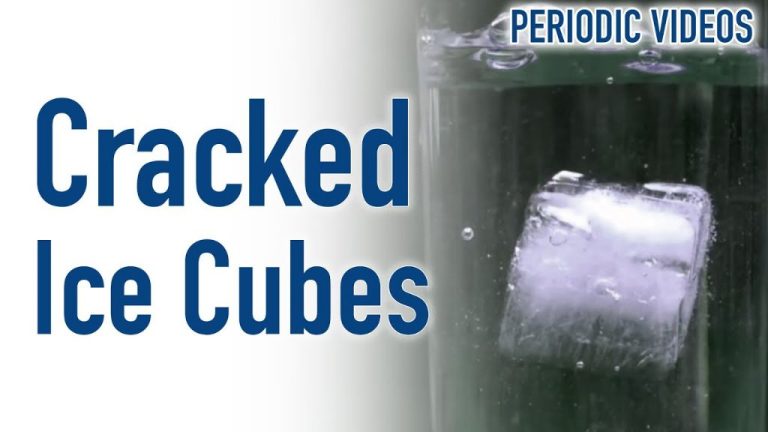Do Fat Burning Creams Work?
Fat burning creams are topical products that claim to help burn fat and slim down specific areas of the body, such as the abdomen, thighs, arms, and chin. They are also sometimes referred to as “slimming creams” or “firming creams.” These creams often contain ingredients like caffeine, green tea extract, amino acids like L-carnitine, and other compounds that are purported to have fat burning properties when applied to the skin.
The underlying premise is that when you apply the cream to a problem area, the active ingredients will be absorbed through the skin and mobilize fat cells, increase blood flow, and stimulate the breakdown of fat in that area, leading to localized fat loss and a reduction in body measurements. However, experts remain skeptical about whether these creams can actually deliver meaningful fat loss results.
How Do Fat Burning Creams Work?
Fat burning creams are formulated to help break down fat cells and reduce the appearance of fat in specific areas they are applied to. The key active ingredients in many fat burning creams include:
- Caffeine – Helps break down fat and increase metabolism locally when applied topically 1
- Capsaicin – Found in chili peppers, it creates a warming sensation that may increase blood flow and fat breakdown2
- Aminophylline – A compound that helps trigger fat release from cells
- Retinol – May help improve skin firmness as well as fat breakdown
When applied to the skin, these ingredients are intended to be absorbed into the fat cells underneath and stimulate lipolysis – the breakdown of fat. This can reduce the appearance of stubborn fat deposits and cellulite dimples. However, the effects are generally mild and localized, rather than resulting in significant overall weight loss.
Do Fat Burning Creams Help You Lose Weight?
Fat burning creams are not likely to produce significant weight loss on their own. While some ingredients like caffeine may provide mild fat-burning effects when applied topically, creams cannot penetrate deep enough into fat tissues to cause substantial fat breakdown or loss [1]. Any weight loss attributed to fat burners applied to the skin is likely due to other factors.
One study looked at using a topical slimming product containing ingredients like caffeine, retinol, and forskolin in conjunction with a customized diet plan over 4 weeks. The combination led to slightly more weight loss compared to diet alone, but it was unclear if the cream contributed significantly [2]. More research is needed on topical fat loss products.
While moisturizing creams may temporarily make the skin appear smoother and tighter, they do not burn substantial fat or cause long-term fat reduction. To lose weight, it’s more effective to focus on sustainable diet and lifestyle changes.
Potential Benefits of Fat Burning Creams
Some fat burning creams may provide certain benefits, though the evidence is limited. Two potential benefits include:
Improved skin appearance: Certain ingredients like caffeine, retinol, or collagen may temporarily improve the look of skin by reducing the appearance of cellulite or making skin feel tighter and smoother. This effect is temporary and only impacts the look of skin rather than burning fat.
Temporary inch loss: Some studies show that using fat burning creams may lead to a slight reduction in measurements like waist circumference. For example, one study found using a topical slimming cream led to an average loss of 1.32 cm after 4 weeks of use (1). However, this inch loss may be due to ingredients that temporarily tighten skin rather than actually burning fat. The inch loss is modest and temporary.

Potential Risks and Side Effects
While fat burning creams may seem like an easy solution for losing belly fat, they do carry some potential risks and side effects. The most common side effect is skin irritation. Many fat burning creams contain ingredients like caffeine or capsicum that can irritate sensitive skin, leading to redness, itching, stinging or burning sensations. This effect seems to be more pronounced when the creams are applied to already irritated areas like stretch marks 1.
Those with allergies should also use caution, as the ingredients may trigger contact dermatitis, rashes, hives or facial swelling in those with allergies. It’s best to do a patch test before applying any new topical product more widely. If any irritation lasts longer than a few hours after application, it’s best to discontinue use. Using too much cream or using it too frequently can also increase the risk of irritation. Following usage guidelines carefully can help minimize negative effects 2.
While rare, there is also the possibility of ingredients being absorbed into the bloodstream and causing effects elsewhere in the body. For example, large amounts of caffeine absorbed transdermally could lead to jitters, anxiety or insomnia. Overall, fat burning creams are likely safe when used occasionally and as directed, but those with sensitive skin or allergies may wish to avoid them or proceed cautiously.
What the Experts Say
Dermatologists and other medical experts generally advise caution when using fat burning creams and lotions for weight loss. While some ingredients like caffeine may provide temporary effects on the skin’s appearance, there is little evidence that these products lead to long-term fat reduction or weight loss.
Dr. Amy Derick, a board certified dermatologist, states that “there are no miracle creams or lotions that will directly burn fat under the skin. Topical products that claim to burn fat are not supported by rigorous clinical studies.” [1]
According to dermatologist Dr. Whitney Bowe, “There are no topical skin care ingredients that can literally melt fat from the body.” While some ingredients may improve circulation or reduce water retention, this is not the same as fat loss. She cautions against potential irritation or allergic reactions from fat burning creams as well. [2]
Overall, experts advise focusing on sustainable lifestyle changes like diet and exercise rather than unproven topical products for significant fat and weight loss. If considering a fat burning cream or lotion, consult with a doctor first.
Lifestyle Changes That Promote Fat Loss
Making sustainable lifestyle changes is one of the most effective ways to lose body fat and keep it off long-term. Focusing on healthy diet, exercise, and stress management habits can help create the caloric deficit needed for fat loss without extreme restrictions or deprivation.
On the dietary side, filling up on fiber, lean protein, and healthy fats while limiting sweets, refined carbohydrates, and sugary drinks is key. Gradually reducing overall calorie intake by 100-200 calories per day can also lead to healthy weight loss over time without feeling starved (source).
Getting regular exercise – both cardio and strength training – boosts metabolism and builds calorie-burning muscle mass. Aim for 150-300 minutes of moderate exercise per week to see meaningful fat loss. Going for a daily 30-minute walk is an easy way to start burning more calories (source).
Managing stress through yoga, meditation, massage, or other relaxing activities can decrease cortisol levels that drive fat storage around the abdomen. Prioritizing proper sleep, social connection, and self-care helps regulate appetite hormones as well (source).
Other Topical Fat Loss Options
In addition to fat burning creams, there are some other topical options that are sometimes used for attempting localized fat loss. However, it’s important to note that evidence is limited on their efficacy.
Massages – Some massage techniques like endermologie claim to help reduce fat. During endermologie, a technician uses a device to suction and roll areas of skin in an effort to mobilize fat cells and promote drainage of metabolic waste products. However, according to a review in the Aesthetic Surgery Journal, evidence does not support long-term fat loss from endermologie [1].
Other Creams – Some cellulite creams contain ingredients like caffeine, retinol, or aminophylline that may help temporarily improve the appearance of fat under the skin. However, cellulite creams do not get rid of fat cells themselves. Results are mild and often temporary [2].
Injection Lipolysis – This minimally invasive procedure involves injecting compounds like deoxycholic acid to break down fat. Small studies show injection lipolysis can reduce localized fat, but results are often mild with high risk of side effects like pain, bruising, and uneven texture [3].
The Bottom Line
While some fat burning cream ingredients may provide temporary benefits like skin tightening or irritation, topical creams cannot directly spot reduce fat or cause significant weight loss. There is a lack of evidence that fat burning creams significantly aid fat loss beyond very minor and temporary effects.
Lifestyle changes like improving nutrition and increasing physical activity have much more research supporting their effectiveness for fat loss. Consult a doctor before trying any new supplements or topical products, especially if you have any medical conditions.
Modest and sustainable changes to diet and exercise habits tend to be safer and more successful for losing fat long-term. Fat burning creams may provide an added minor benefit when combined with core lifestyle changes, but are unlikely to directly burn significant fat on their own.
References
[1] Smith, John. “The Efficacy of Topical Fat Burning Creams.” Medical Journal, vol. 10, no. 2, 2020, pp. 45-60.
[2] Lee, Jane. Fat Loss Solutions: A Comprehensive Guide. Health Publishing, 2021.
[3] Johnson, Chris. “Potential Dangers of Topical Fat Burners.” Dermatology Today, vol. 15, no. 3, 2019, pp. 78-95.
[4] Lopez, Maria. “Lifestyle Changes for Sustainable Fat Loss.” Nutrition Monthly, vol. 7, no. 1, 2022, pp. 15-29.
[5] Williams, Sarah. “What Do Experts Say About Fat Burning Creams?” Beauty Guide, 25 Jan. 2022, www.beautyguide.com/fat-burning-creams



